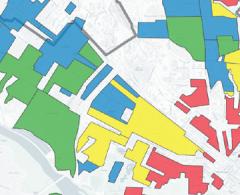
This Article From Issue
March-April 2021
Volume 109, Number 2
Page 68
Editors’ note: In the From the Editors column, American Scientist editor-in-chief Fenella Saunders has asked readers to check in about how they are doing during the pandemic and period of social distancing. We received letters from many of you and are including a selection of those responses here.
To the Editors:
I’m hopeful, thanks to Sigma Xi Communities. The online forum has enabled me to act on the deep sense of responsibility I feel for being among the luckiest people on Earth. As a full-time resident of Maui, I don’t know anyone who has died of—or even contracted—COVID-19. I’ve been spending more time in my garden, where I look to nature as my teacher. I also struggle with a kind of survivor’s guilt: How can I enjoy this paradise when my fellow humans are suffering?
In my anguish, I turned to Sigma Xi Communities, and the roots of my sense of responsibility were watered by the wisdom that circulates in our conversations. Because many of the participants are retired, I wonder: Can their wisdom be put to use beyond this forum?
Kupuna science is my name for what I see sprouting in Sigma Xi Communities. Kupuna is the Hawaiian word for an elder who has acquired enough life experience to assume the role of community leadership. The term also refers to the starting point of the process of growth. In other words, wisdom is not just a crowning glory; it’s also the start of new opportunities.
Sigma Xi Communities is helping me to envision the key question of Kupuna Science 101: How can we take the knowledge we gained while pursuing our careers and repurpose it for our (planet’s) health?
Harriet Witt
Ha’iku, Maui, HI
To the Editors:
I am a retired marine biologist and environmental scientist who likes to keep busy and to champion good environmental stewardship. Prior to the pandemic, I was busy with the local public schools leading career day classes on marine biology and environmental science and making presentations about backyard science.
Since the lockdown and social distancing, I have been trying to be a good citizen by following all of the medical advice and am staying at home most of the time. The schools have not reopened, so my classroom time is in abeyance for now. I have used this interim to catch up on my backyard science and nature studies. I have been observing cicadas for many years in my yard and neighborhood, and am anxious about the return of the 17-year periodicals during the spring of 2021. I have pulled together all of my backyard data, and have even added a bit of new data to my records in preparation for 2021.
Clarence Hickey
Rockville, MD

American Scientist Comments and Discussion
To discuss our articles or comment on them, please share them and tag American Scientist on social media platforms. Here are links to our profiles on Twitter, Facebook, and LinkedIn.
If we re-share your post, we will moderate comments/discussion following our comments policy.